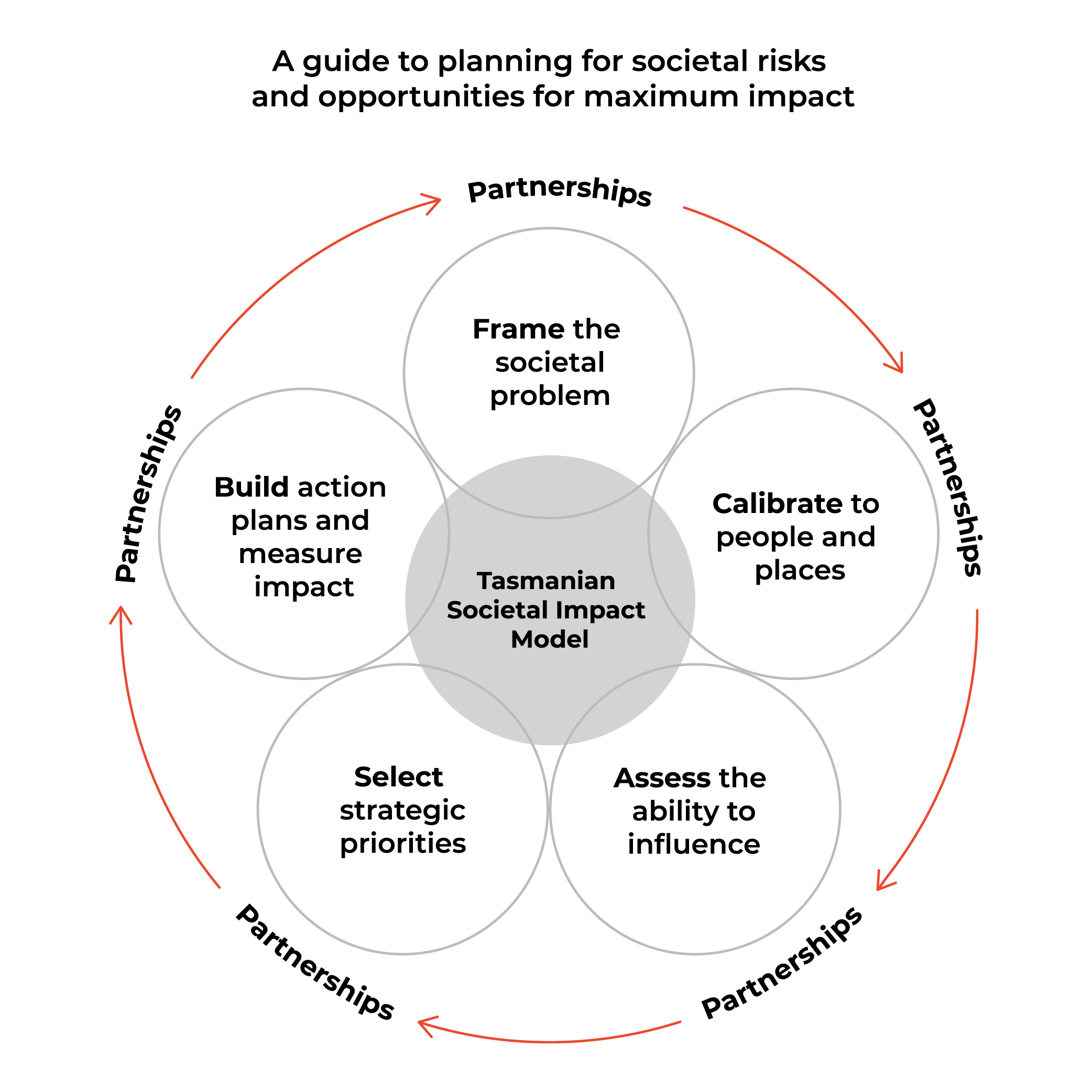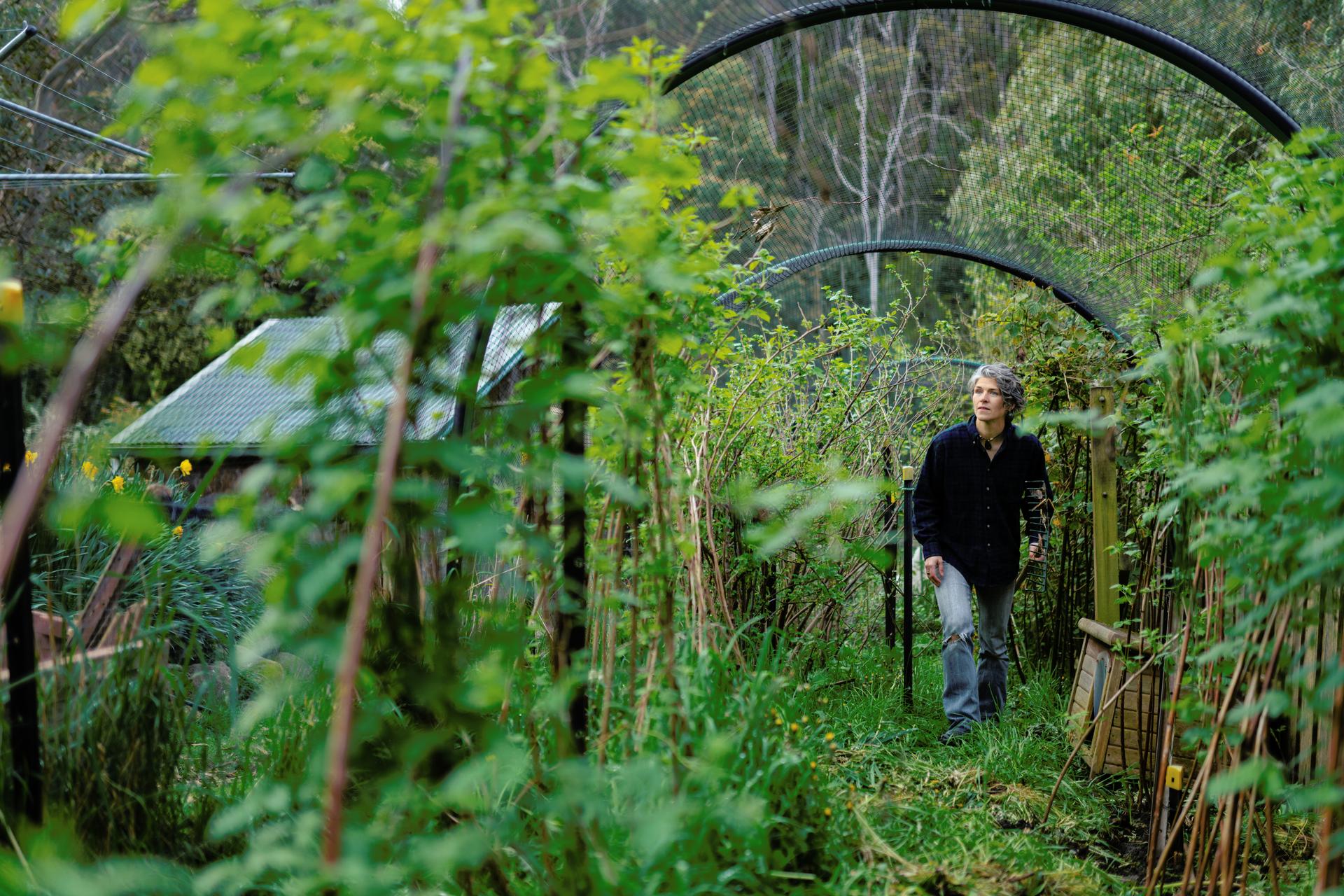The Tasmanian Societal Impact Model (TSIM) Playbook
Sharing our experience with the world
Public recognition of what universities do underpins their societal mandate, but that mandate is increasingly being challenged. Universities are asked to demonstrate their impact by international organisations, national governments, and funding agencies. As a result, attempts to measure impact are proliferating, and a coordinated approach is needed to do this effectively.
“Our unique location, our island character and our complex history bring both the obligation and the opportunity to make a distinctive global contribution”
University of Tasmania, Strategic Plan 2019-2024

The Tasmanian Societal Impact Model (TSIM) is the result of a collaboration between the University of Tasmania (UTAS) and Elsevier, exploring how to plan effectively for place-based strategies for maximum societal impact. The TSIM enables research and teaching organisations to identify place-based areas of societal risk and opportunity, then rates the organisation’s strengths in these areas, and emphasises collaboration with key external stakeholders and the community.
The TSIM is currently under testing at UTAS and is so far proving to have wide and varied applications in a higher education setting. We believe it is a tool that can assist organisations to develop place-based strategies to address societal risks and opportunities, monitor the success of these strategies, and ultimately demonstrate their societal impact to external stakeholders using measures that go beyond traditional metrics of organisational performance.
We realise that all higher education organisations and their communities are unique and that what might work in Tasmania might not work elsewhere. However, we want to contribute to the global conversation by sharing our experience and so we share this evolving model—in the form of a playbook—for free use and adaptation, to further our collective understanding of how to measure and amplify societal impact locally and globally.
The TSIM is freely available in a playbook that consists of five main chapters that each outline the five steps of the model. We refer to our approach as a ‘playbook’ to highlight that the five steps are broad guides to important decision-making processes around planning for societal impact. They are not meant to be rigidly sequential but rather building blocks to ‘play’ with to maximise not just impact but the ability to confidently measure and attribute plausible explanations of impact.

The Goal: To scope and frame, with external partners, the range of possible societal risks and opportunities for amplification of societal impact through collaborative intervention.
The Importance: To articulate and contextualise the building blocks of an organisation’s strategy to achieve and amplify societal impact.
The Goal: To achieve an agreed, information-based understanding of the relative importance to place for the societal risks and opportunities.
The Importance:
To calibrate the importance of the societal risks and opportunities to place, and ensure that the organisation’s strategy will have realistic, positive, and significant benefits for society.
The Goal: To assess the organisation’s relative ability to influence each of the societal risks and opportunities in conjunction with the relative ability of external partners.
The Importance: Time and resources are finite. Identifying those areas where the biggest difference can be made is important because it provides a rigorous, information-driven assessment process to identify areas of societal opportunity in which the organisation can be influential. The greater the ability to influence, the greater the likelihood of success.
The Goal: To prioritise which societal risks and opportunities to include in organisational strategic plans.
The Importance: To bring together the information collected thus far and empower the organisation to make decisions about strategic prioritisation of resources for optimal impact. Also, to facilitate discussions around the amplification of impact in areas of high importance, but in which ability to influence can be improved.
The Goal: To develop action plans for each societal risk and opportunity to prioritise. The plans should specify the impact pathways of the interventions, and how societal change will be measured.
The Importance: To enable the organisation to build action plans for intervention, with time horizons and monitoring of change, to ultimately demonstrate impact.
If you make it this far, congratulations! Impact occurs over a long time horizon, and as such we are yet to fully test and understand this part of the model. We hope that you will join us in sharing your lessons learnt, so we can collectively build our understanding and knowledge to amplify societal impact.
“Universities will have a vital role to play in addressing these critical global challenges and achieving the Sustainable Development Goals. Universities have a responsibility through their teaching to equip the next generation of leaders,innovators and thinkers to understand the global challenges facing the world and the role they can play in rising to meet these challenges.”
SDSN, Australia, New Zealand, & Pacific, April 2022.

We would be delighted to share our TSIM with you. We would love to hear your thoughts and feedback to help create a community of practice, as a collective approach that will help improve the TSIM.

If you have any questions for the TSIM team, please reach out via the following email address: hello@societalimpactmodel.org